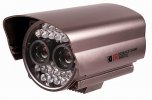kamkar
Well-Known Member
- Joined
- Oct 11, 2013
- Messages
- 34,270
- Reaction score
- 18,889
- Country
- Denmark
- Dash Cam
- 10 years, many dashcams
As long as low light ( not even night ) is still such a problem for dashcams i see no reason to go up in resolution, so i think that better low light performance will hit first in the 1080P resolution.
And i would prefer to move avay from SD cards for storage, and so i will have to go avay from the current way of having a box with it all in mounted on my windscreen, cuz i will not like a huge dashcam with a 3" screen on my windscreen, or rather i would take that too if it would then give me much better low light performance than now.
I like 4K but i cant see me getting anything i can play that back on, not a new computer monitor ( need a new one but i will go for 1080p ) or a new TV ( have working 1080P TV so no need there )
Only reason i can see me getting 4K anything would be if i suddenly had a lot of money to burn, but in that case i would have to go travel for a long time first to get my hardboiled brain resat back to normal ( if possible )
And i would prefer to move avay from SD cards for storage, and so i will have to go avay from the current way of having a box with it all in mounted on my windscreen, cuz i will not like a huge dashcam with a 3" screen on my windscreen, or rather i would take that too if it would then give me much better low light performance than now.
I like 4K but i cant see me getting anything i can play that back on, not a new computer monitor ( need a new one but i will go for 1080p ) or a new TV ( have working 1080P TV so no need there )
Only reason i can see me getting 4K anything would be if i suddenly had a lot of money to burn, but in that case i would have to go travel for a long time first to get my hardboiled brain resat back to normal ( if possible )

